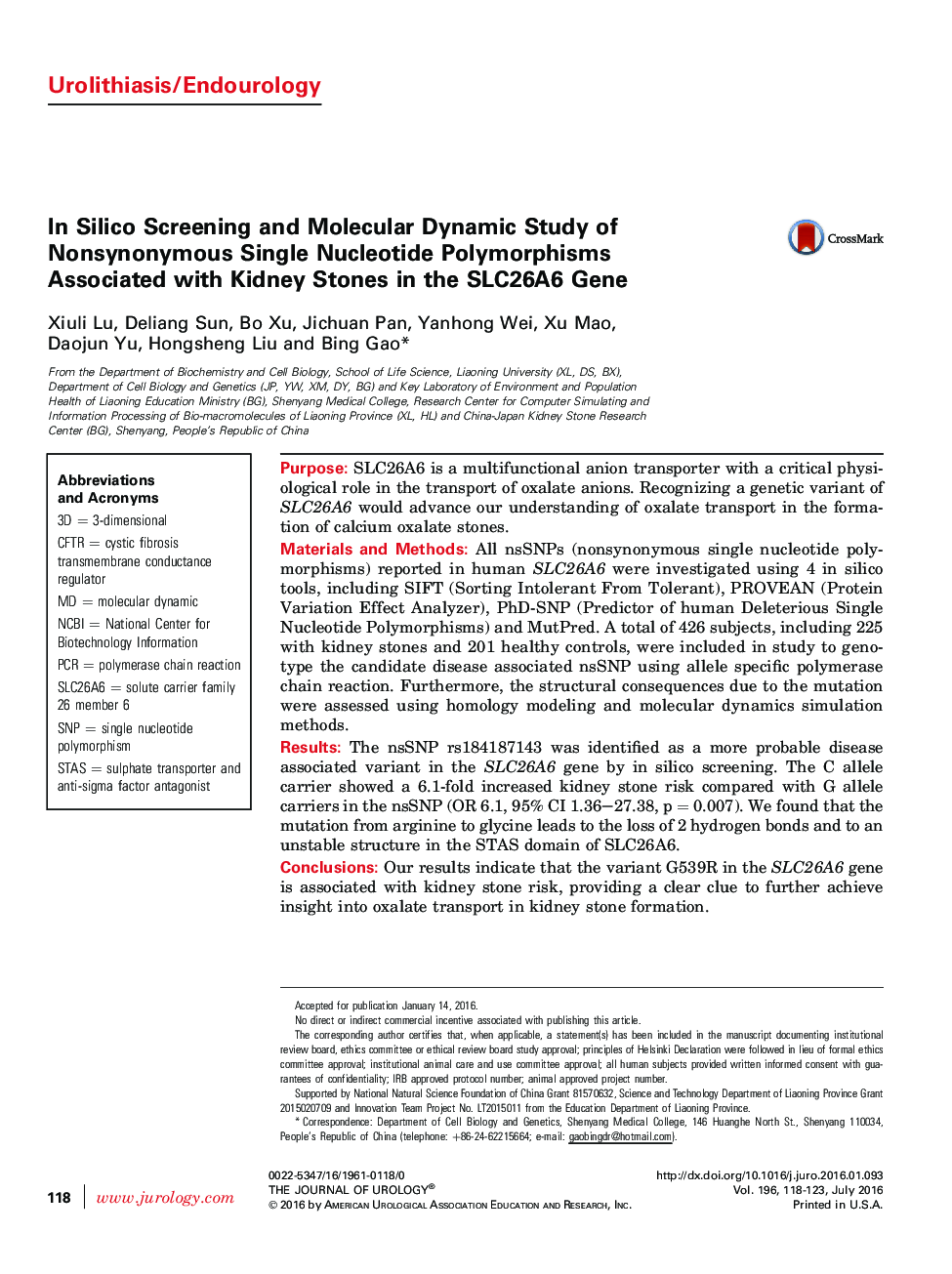| Article ID | Journal | Published Year | Pages | File Type |
|---|---|---|---|---|
| 3858109 | The Journal of Urology | 2016 | 6 Pages |
PurposeSLC26A6 is a multifunctional anion transporter with a critical physiological role in the transport of oxalate anions. Recognizing a genetic variant of SLC26A6 would advance our understanding of oxalate transport in the formation of calcium oxalate stones.Materials and MethodsAll nsSNPs (nonsynonymous single nucleotide polymorphisms) reported in human SLC26A6 were investigated using 4 in silico tools, including SIFT (Sorting Intolerant From Tolerant), PROVEAN (Protein Variation Effect Analyzer), PhD-SNP (Predictor of human Deleterious Single Nucleotide Polymorphisms) and MutPred. A total of 426 subjects, including 225 with kidney stones and 201 healthy controls, were included in study to genotype the candidate disease associated nsSNP using allele specific polymerase chain reaction. Furthermore, the structural consequences due to the mutation were assessed using homology modeling and molecular dynamics simulation methods.ResultsThe nsSNP rs184187143 was identified as a more probable disease associated variant in the SLC26A6 gene by in silico screening. The C allele carrier showed a 6.1-fold increased kidney stone risk compared with G allele carriers in the nsSNP (OR 6.1, 95% CI 1.36–27.38, p = 0.007). We found that the mutation from arginine to glycine leads to the loss of 2 hydrogen bonds and to an unstable structure in the STAS domain of SLC26A6.ConclusionsOur results indicate that the variant G539R in the SLC26A6 gene is associated with kidney stone risk, providing a clear clue to further achieve insight into oxalate transport in kidney stone formation.
